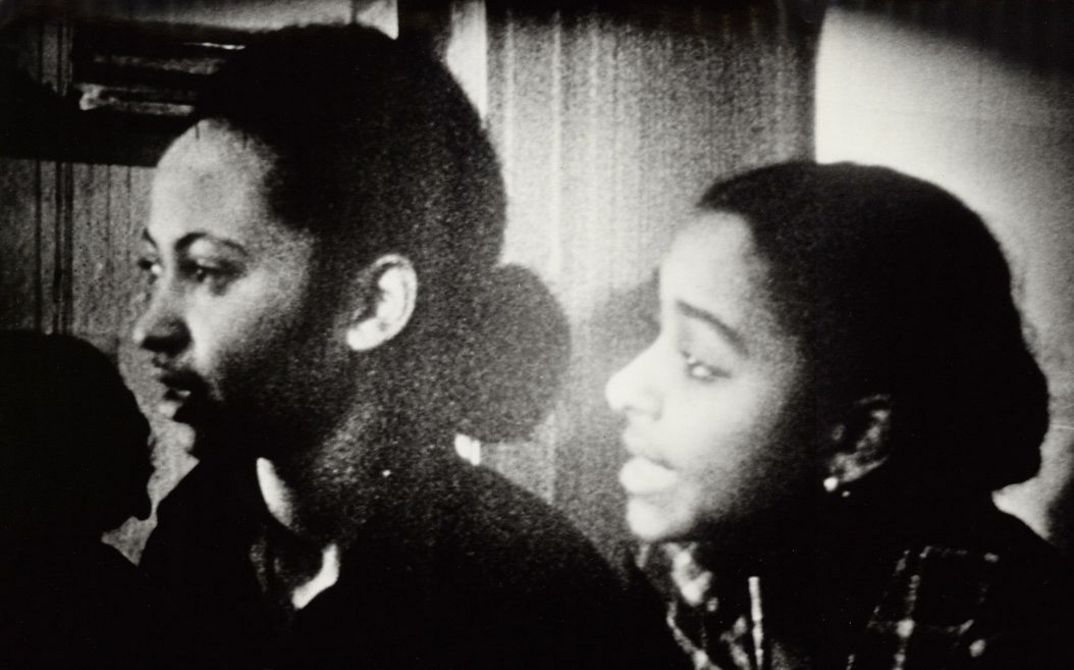The Films by Bora and Vora Stand for Different Documentary Approaches
EIN HERBST IM LÄNDCHEN BÄRWALDE begins by capturing the morning atmosphere close to Meinsdorf. The field stretches out to the horizon. A tractor enters the frame in picturesque fashion. “Ländchen Bärwalde is what the inhabitants of this area call their home. Mine is 9000 kilometres away.” Burgeoning director Gautam Bora, who is from northern India, sees the field and the tractor as fulfilling a dream of progressive agricultural production. A form of production which he – as he also says in his commentary – only previously knew from photos. Boras’s film crafts a portrait of East German agriculture using three generations of the Balke family as an example. Bora spends two thirds of the film introducing the members of the family in slightly uninspired fashion: he has the grandparents give an account of the tribulations of their youth, in the taciturn manner fitting for Brandenburg; he grants grandfather Gustav a small triumph over his grandson Bernd when it comes to ploughing the field with a hand plough; he goes on to focus his attention on the grandson’s generation. The 19-year-old Bernd prefers to drive the tractor, just like his older brother Detlef. The Balkes are a family of mechanisers, the professional embodiment of the industrialisation of East German agriculture. As an eager mechaniser par excellence, older grandchild Detlef is given the role of the hero in the film. Bora compares the developments in East German agriculture with the everyday realities for Indian farmers. This comparison presents industrialised agriculture as a form of progress, even though its environmental consequences were already visible when the film was being made.
EIN HERBST IM LÄNDCHEN BÄRWALDE and Chetna Vora’s OYOYO are two very different films. While Vora feels her way towards the living conditions of the students at the hall of residence, the roles allocated by the dichotomic understanding of progress are fixed from the outset for Bora. Serving as an examination piece during her studies, Chetna Vora’s film has a strict structure. The conversations take place in the rooms, separated by scenes in the corridor, as if the corridor were a way of connecting the students, their life paths and perspectives and placing them in relationship to one another. Vora’s film narrates just as much with images as it does with the content of the conversations. This faith in images might have had something to do with the fact that Vora had Ulrich Weiß, one of DEFA’s most visually adept directors, by her side as a dramatic advisor. What was likely just as important is that she was able to trust in her cinematographer. The film was shot by Vora’s husband Lars Barthel, the father of her daughter, who would have been three years old at the time.
“The students’ experiences in East Germany are not free from frictions in OYOYO, while the German Democratic Republic functions as a development ideal in EIN HERBST IM LÄNDCHEN BÄRWALDE.”
The students’ conversations in OYOYO come across as spontaneous, whether the ones among themselves or the ones they have with the director. Vora only seldom uses questions to direct the course of the conversation. That’s why one intervention she makes around two thirds into the film stands out. The young Carmen Mara Barbosa e Sá talks about her family history in response to Vora’s questions. When the young woman from Bissau wonders what else to say, she starts talking about East Germany. Vora interrupts her in voiceover and asks her to talk about her country of origin instead.
East Germany and its white inhabitants remain invisible in OYOYO. Encounters with them are only briefly addressed in two episodes narrated by Tungalag Sodnomgombyn. At one point, she speaks with her friends about the cost effectiveness of material consumption. When her friends cast doubt on the very concept, she makes reference to a conversation with “that impossible man”, seemingly a lecturer. Later she speaks with Chetna Vora about the differences in how time is grasped in Mongolia and East Germany and the great distress that people in Germany feel when they don’t manage to fulfil their self-imposed everyday plans. The students’ experiences in East Germany are not free from frictions in OYOYO, while the German Democratic Republic functions as a development ideal in EIN HERBST IM LÄNDCHEN BÄRWALDE. The latter image is likely to have flattered those responsible for (film) policy.
